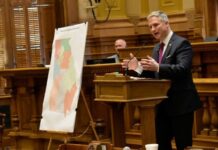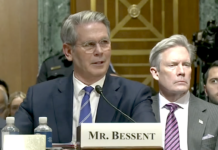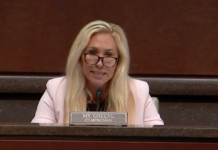
Georgia continues to have among the highest rates of new coronavirus cases in the country, with the latest White House Coronavirus Task Force report showing Georgia with the second-highest rate of new infections.
That’s an improvement over Georgia’s position as the state with the highest rate nationally the week before. But the state’s recent progress in slowing the viral spread “remains fragile,” according to the report.
The task force’s weekly reports to governors are not made public, but the document dated Sunday was acquired by WABE and the Center for Public Integrity. The Atlanta Journal-Constitution obtained earlier versions, drawing scathing criticism from Gov. Brian Kemp.
Georgia is still in the red zone for new cases, with 167 new cases per 100,000 people, according to the report. The national average is 93. The state’s rate dropped from 216 new cases per 100,000 people last week.
The state progressed into the yellow zone for its positivity rate after falling below 10% but it still has the 11th highest rate in the country, according to the report. The positivity rate is a measure of the tests identifying positive cases.
“Georgia is making progress and has seen a decrease in new cases and a decrease in test positivity over the last week, but these improvements need to accelerate,” the report said.
The task force also recommends a statewide face mask requirement for counties with 20 or more active cases “to ensure mask usage, as improvements remain fragile.” It also recommends bar closures in hot spots, further limiting indoor dining and ramping up rapid testing in nursing homes.
Kemp has resisted calls for a statewide mask requirement, choosing instead to encourage people to wear them willingly. He recently relented somewhat and allowed local officials to require masks in limited situations, including on public property and in businesses where the owners allow it.
The governor hasn’t disputed the task force’s numbers, but Kemp has railed against a press that he said “only focuses on the bad numbers.” He attributed the report’s earlier leak to “pandemic politics.”
His spokeswoman, Candice Broce, also did not dispute the numbers in the most recent report but said the governor relies on the findings and guidance of the state’s public health commissioner and the state Department of Public Health.
“Georgia continues to make progress in the fight against COVID-19 with notable declines in the number of cases, hospitalizations, and positivity rate,” Broce said in a statement Tuesday.
On Tuesday, the governor also renewed his call for Georgians “to do four things” to slow the spread, including wear a mask, practice social distancing, wash hands regularly and follow his public health guidelines in his executive orders that include bans on large gatherings, restrictions on restaurants and other directives.
“These four things will require some sacrifice and grit, but these four actions will save lives and jobs,” he said in a video message released Tuesday afternoon unveiling his “Four things for Fall” message. “So, do it for your family and friends, do it for your faith community or do it for college football.”
About half of Georgia’s counties have high levels of community transmission, but the report noted that, for the first time, the number of counties in the red zone dropped. That progress, the report said, “needs to accelerate” across the state and urged increased mitigation efforts.
Public health experts have echoed that. Dr. Carlos del Rio, who is the executive associate dean of Emory University School of Medicine at Grady Health System, said on Twitter Tuesday that the nearly 23% drop in new cases is encouraging, but he emphasized that Georgia’s continued presence in the red zone is troubling. “Making progress but these improvements need to accelerate,” he said.
There has also been a significant drop in the number in testing. The number of diagnostic tests last week declined 16%, although the report notes that this number could be underestimated because of testing delays.







